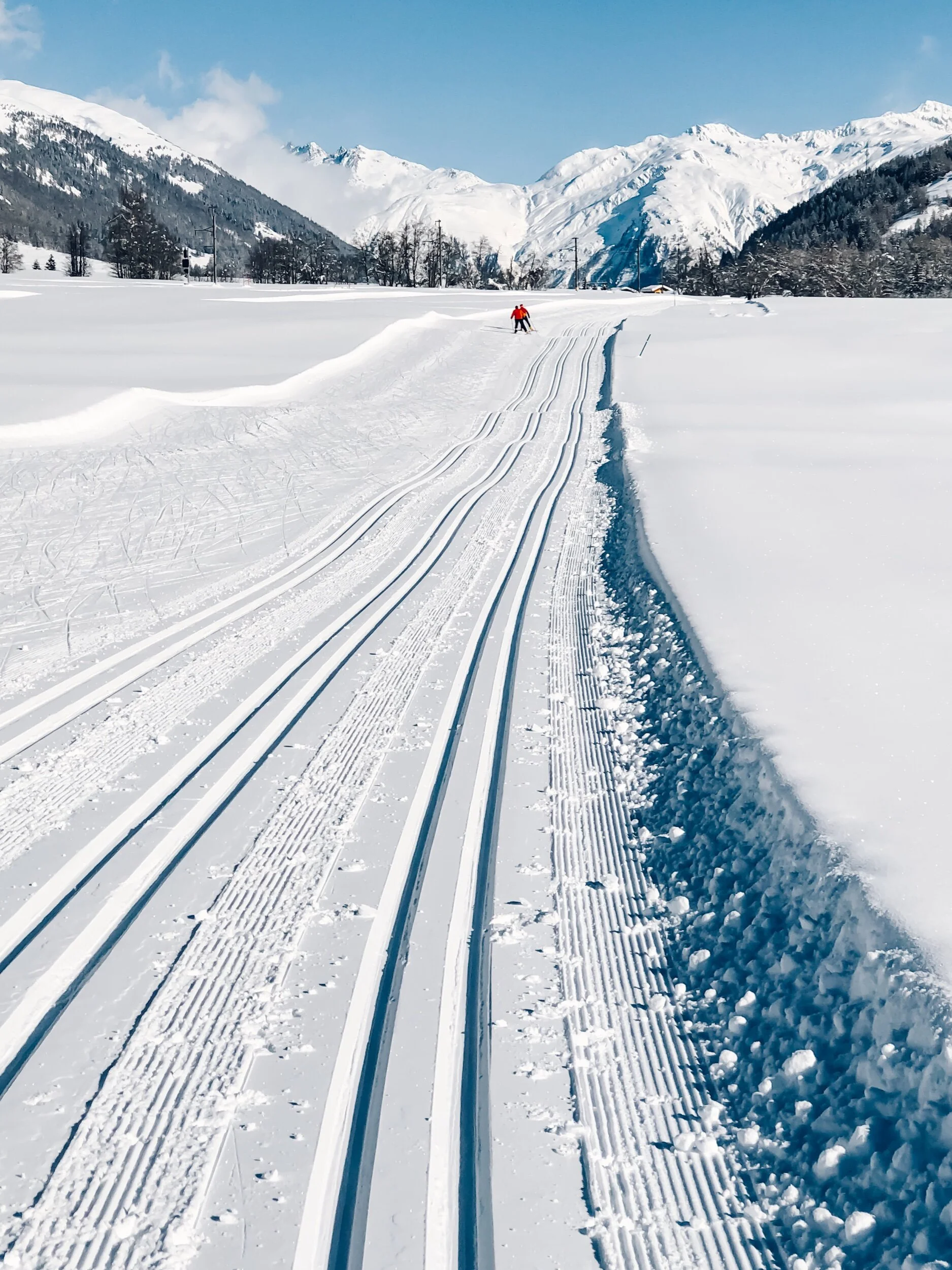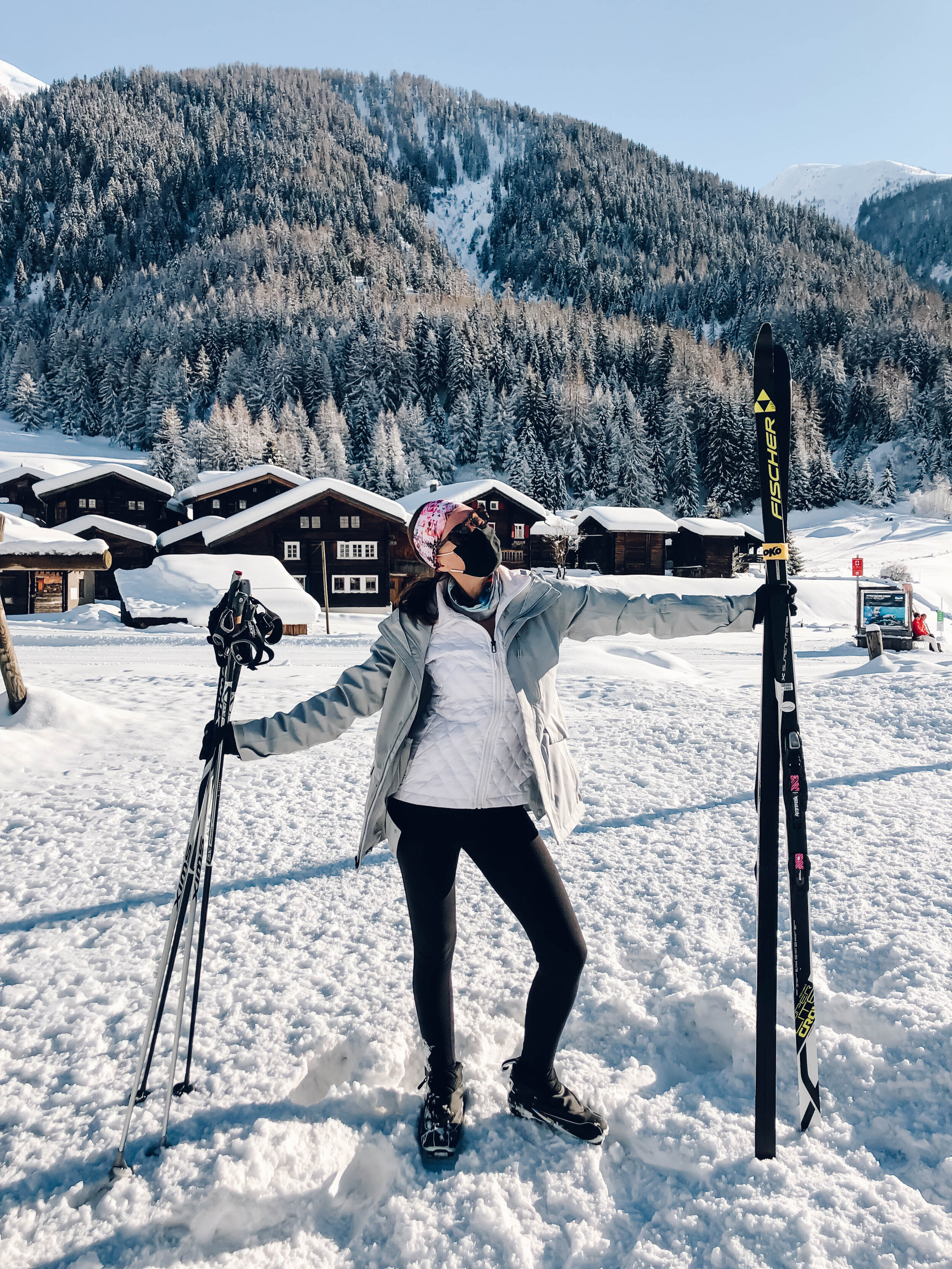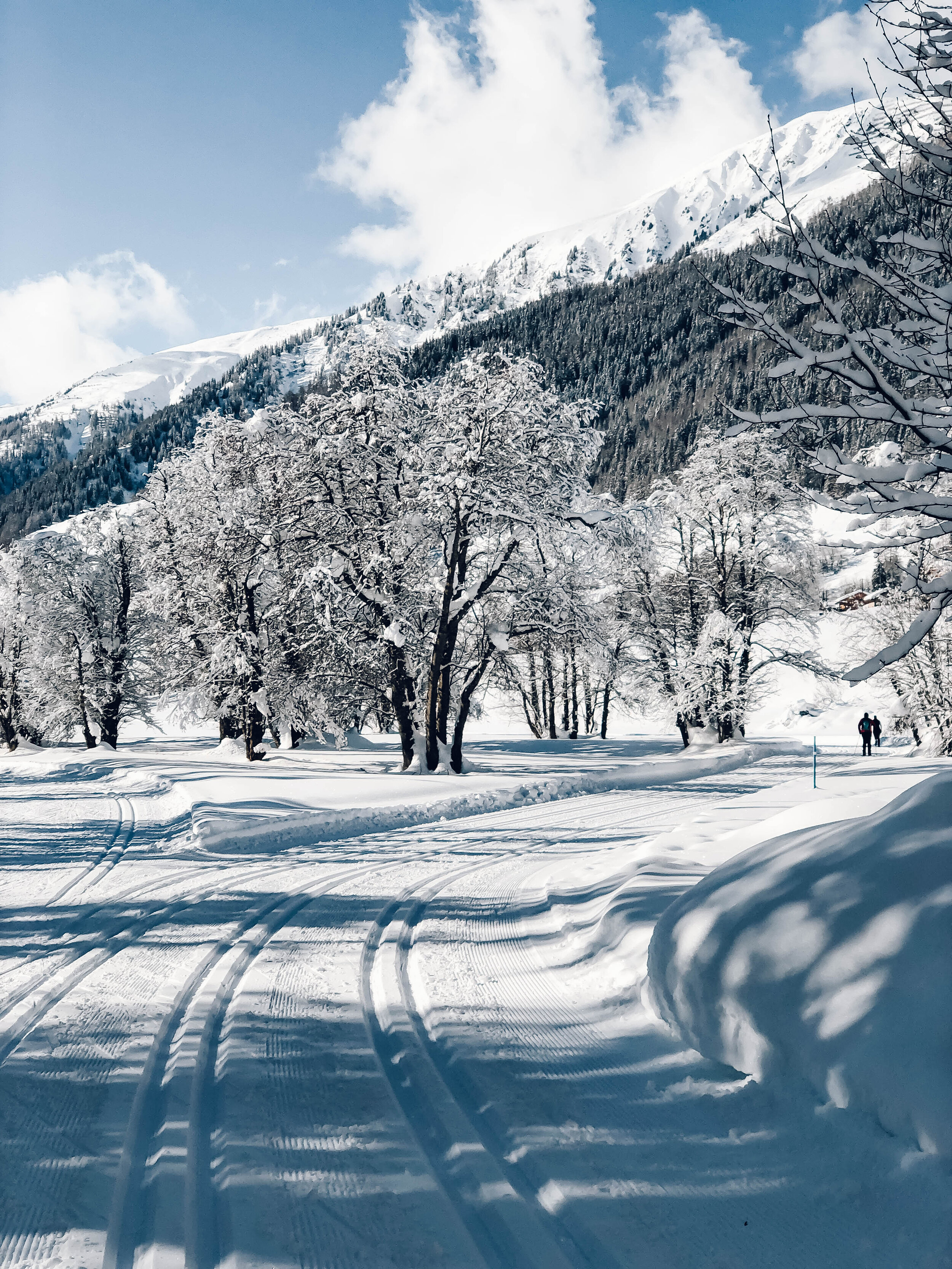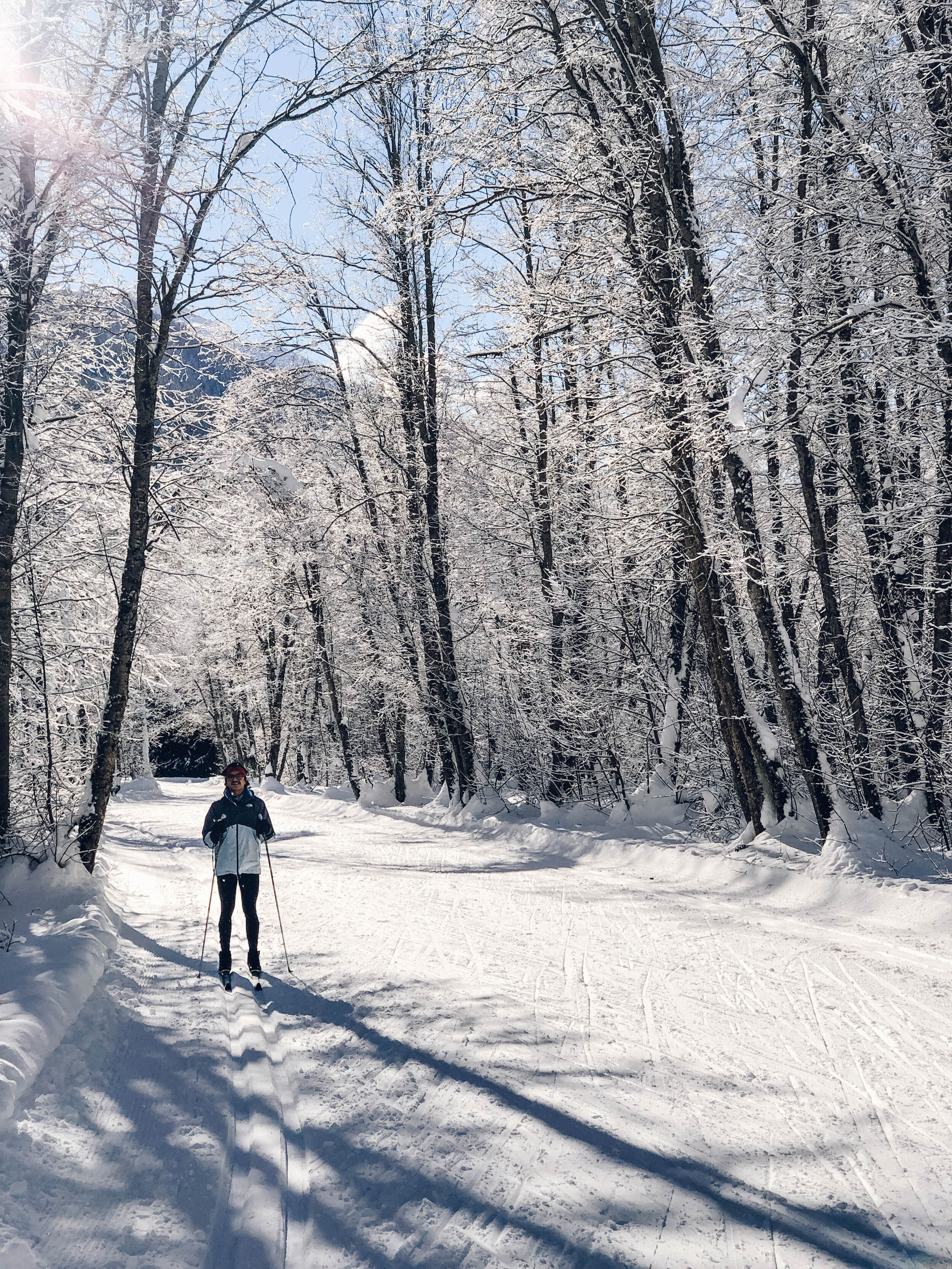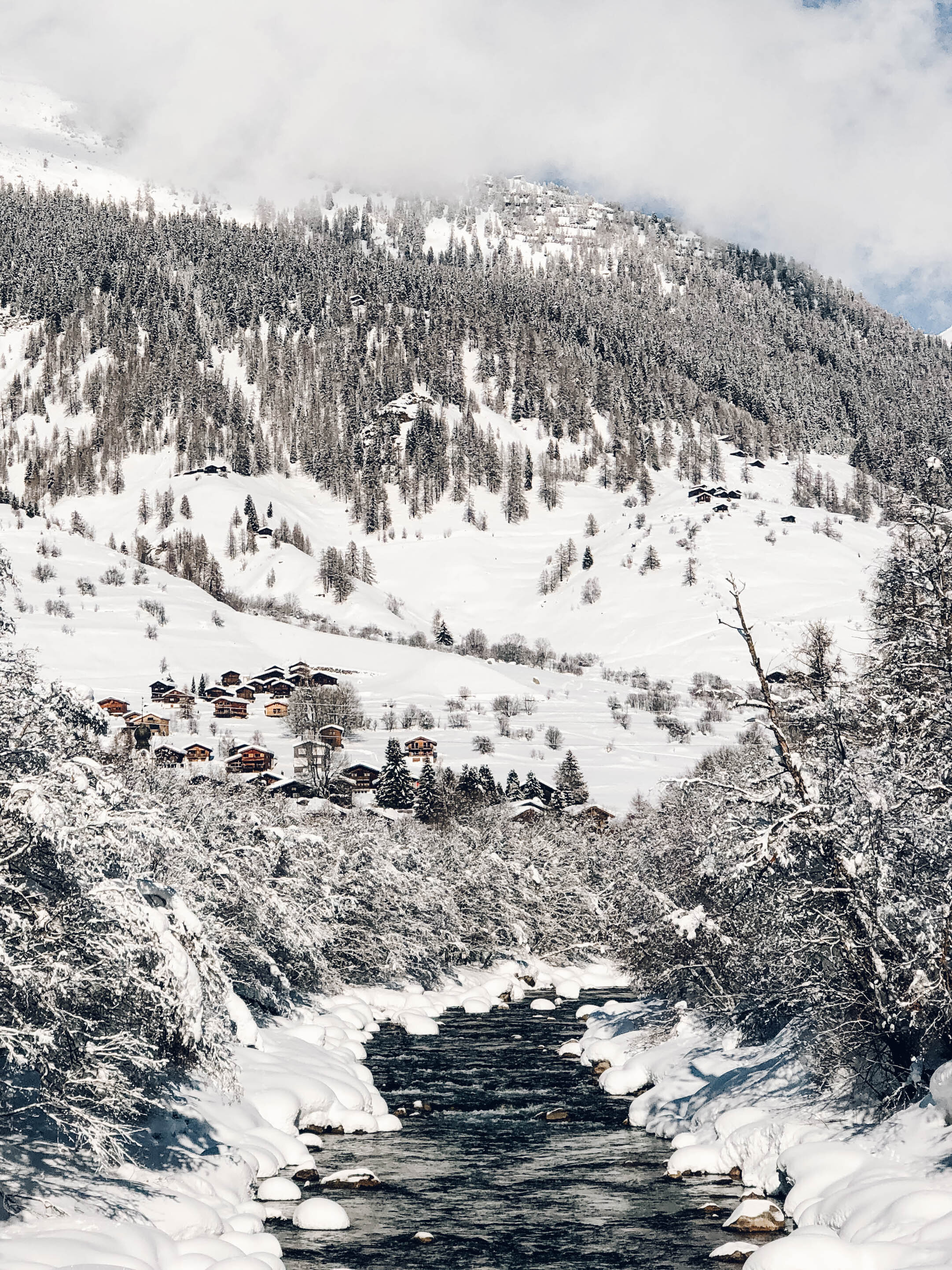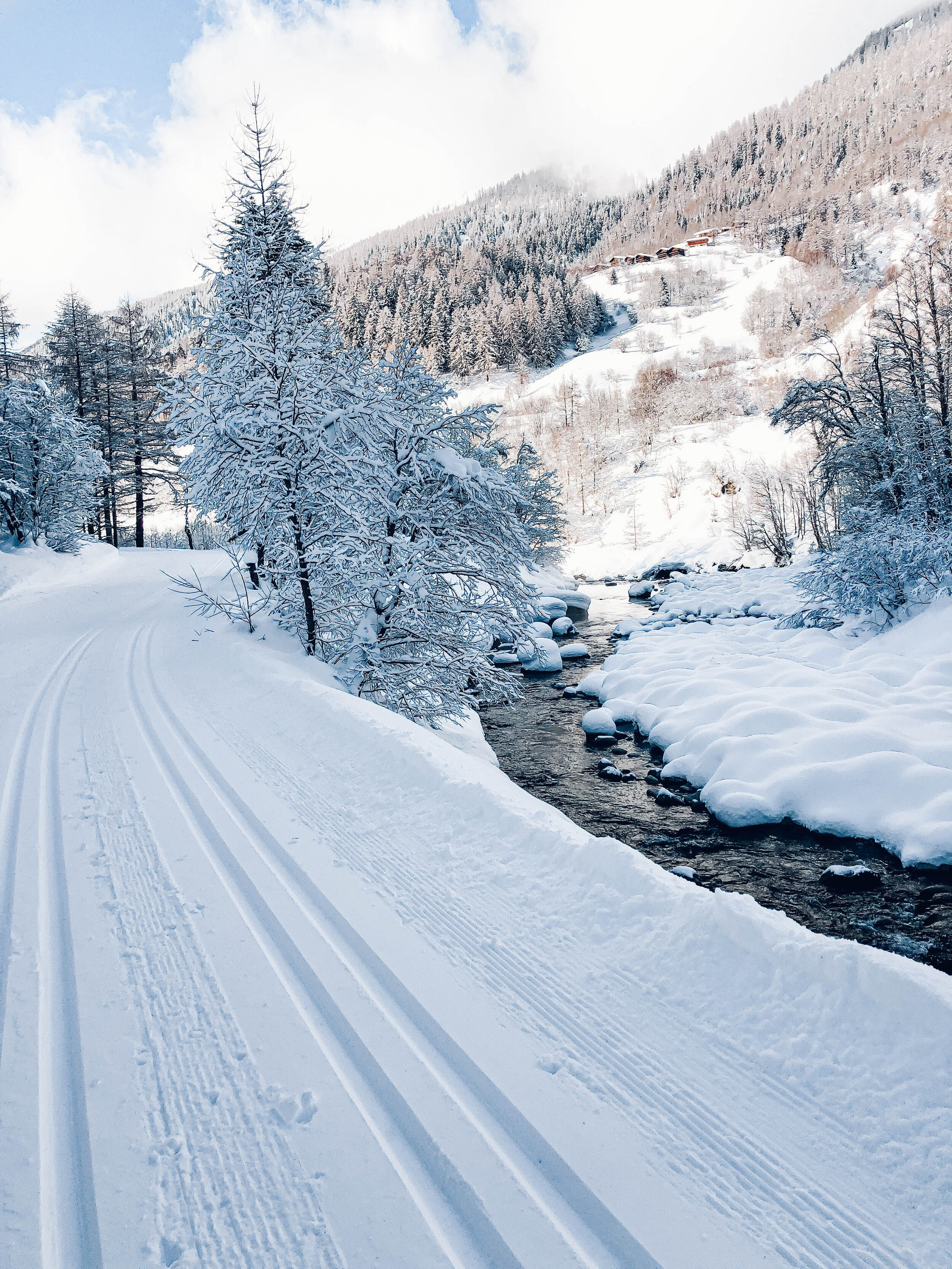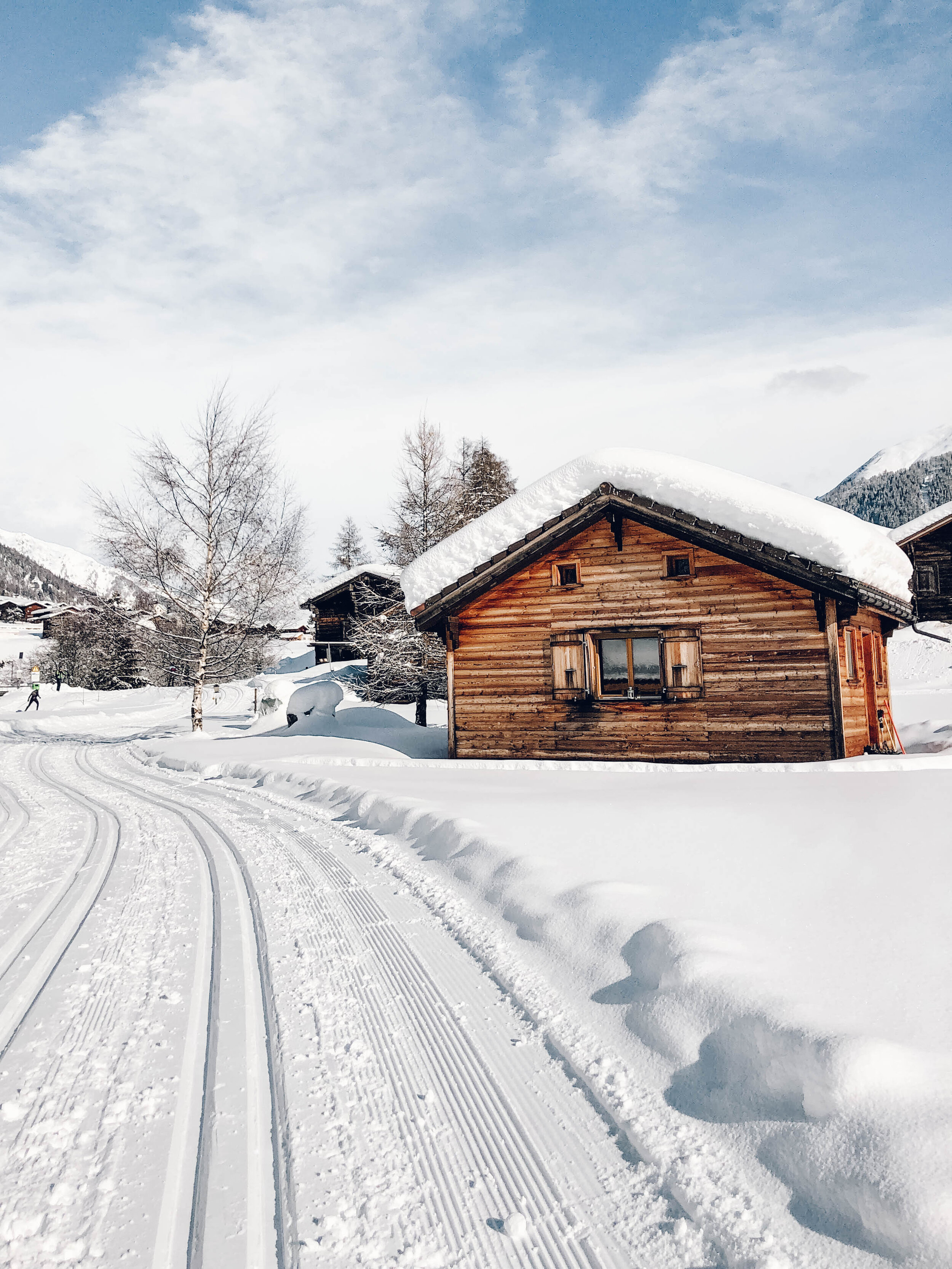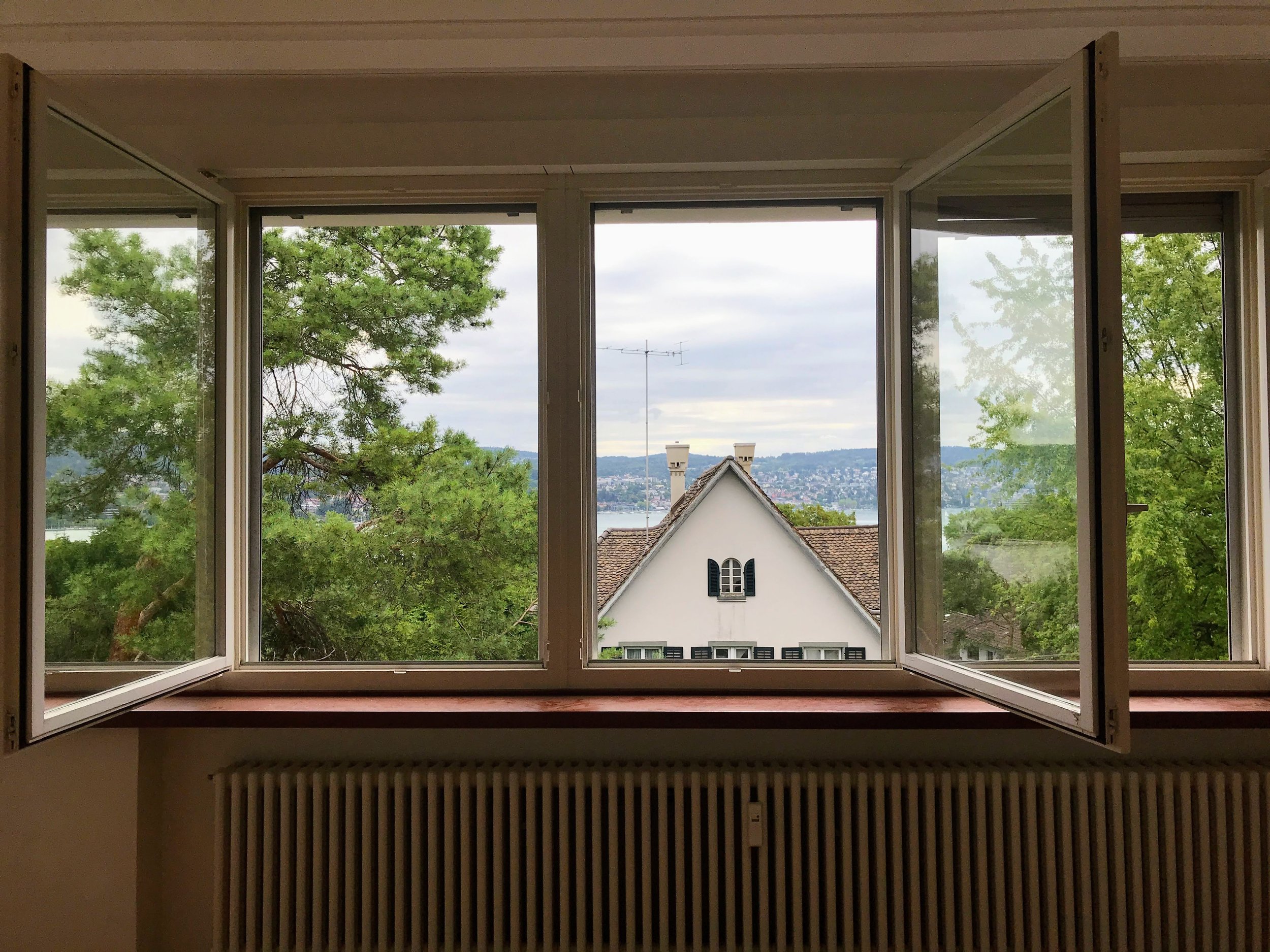Gliding in Goms: Cross-Country Skiing in Goms, Switzerland
I had a big “first” this January: it was the first time I got on a pair of skis since moving to Switzerland!
Well, cross-country skis - but that still counts, right? I’ve mentioned a few times that I’m just not that much of a winter person. But in an effort to not just survive, but thrive, in these cold months, Raunaq and I have started to add in one new snow sport into our winter repertoire every year. First year, it was ice-skating (specifically, ice-skating outdoors on natural rinks!). Second year, it was snowshoeing (we loved it so much we bought shoes on our way home from our first trail). And this third winter: cross-country skiing (the cool kids call it XC). Who knows...maybe at this rate, we will actually make it on downhill skis in the next few years after all. And maybe, I’ll become a winter person after all.
My first impression of XC? I’m a big, big fan! It’s a great workout in a beautiful setting, and once I found my stride, I even found it to be a bit meditative. Oddly enough, the closest comparison I can think of to cross-country is stand-up paddleboarding. Now, if that sounds crazy, stick with me here. Lots of the muscles and movements are similar in SUP and XC, and once you get into a nice rhythm in either sport, you’ll find yourself peacefully gliding along through nature. Calming, yet physically demanding. Does that comparison hold? Try it, and let me know!
Goms Valley
I have lots of tips and tricks for those who are cross-country newbies like myself. But first, we need to talk about Goms.
Lovely little Goms, tucked away in a remote area of Valais, full of the Swiss pastoral usual subjects: wooden houses, quaint villages, snowy forests, big mountains. And just when you thought it couldn’t possibly be more idyllic - there is a river running through the whole valley (the young Rhône!). Perfection. Goms is actually made up of 12 traditional villages, all connected by the Matterhorn Gotthard Railway: Niederwald, Blitzingen, Selkingen, Biel, Ritzingen, Gluringen, Reckingen, Münster, Geschinen, Ulrichen, Obergesteln and Oberwald (now try saying all those five times fast). The landscape here is really breathtaking, and because the Goms Valley lies at an average of 1300 meters in altitude, snow is a near-guarantee in the winter months. But because there are only a few small downhill ski areas in the valley itself, Goms is nowhere near as visited as the nearby Aletsch Arena or the more popular ski resorts in Valais. Which makes it a bit of a hidden winter gem, in my book.

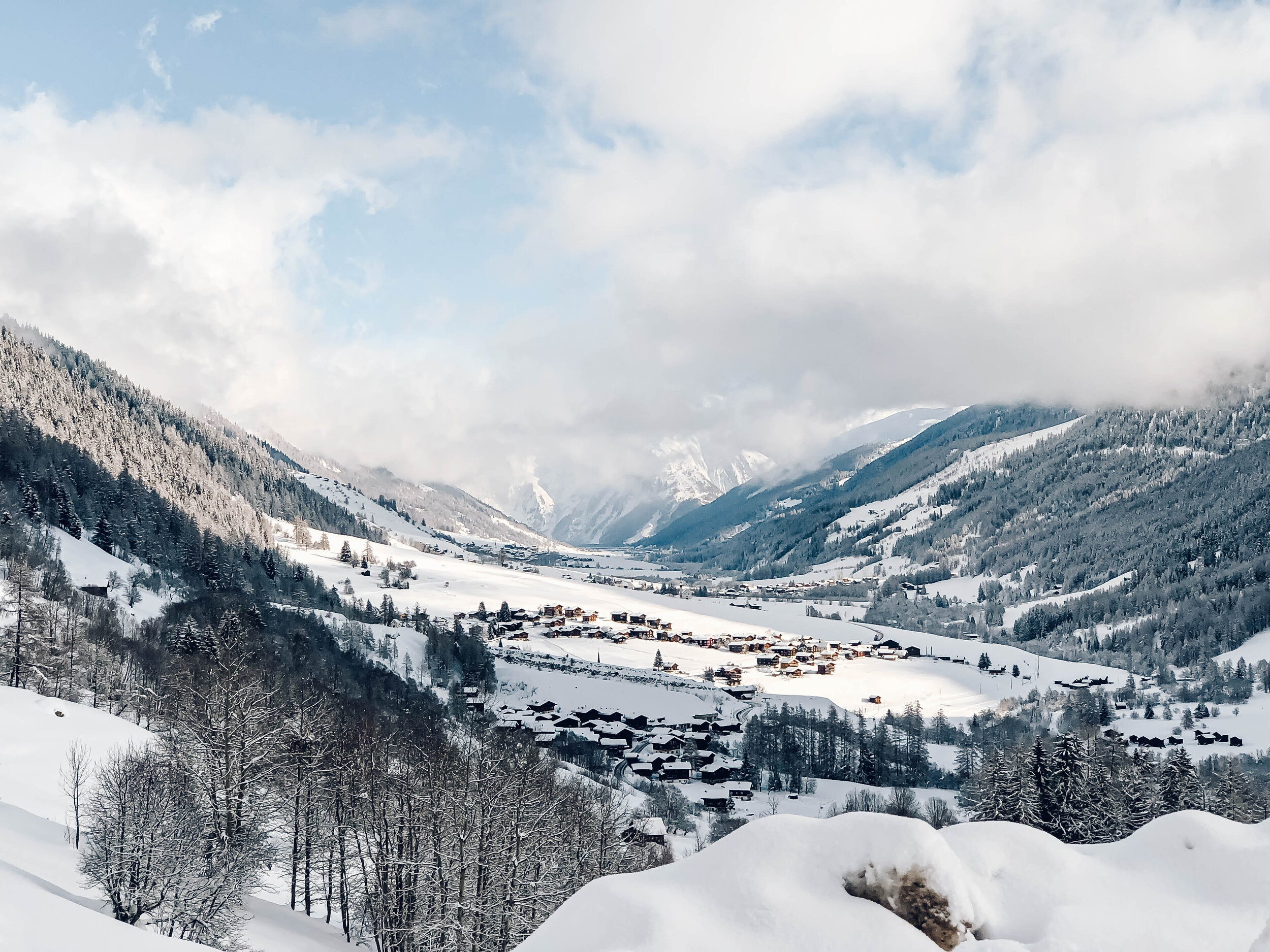
Goms is pretty far from Zürich, over three hours by train. Although to be fair, it is a very direct journey for such a long distance: it’s just a two-hour train from Zürich HB to Brig, and then a one-hour regional train on to Goms. It probably could be done in a very long day, but since we were celebrating our wedding anniversary (three years!), Raunaq and I decided to stay in Goms for the weekend. We chose Blitzingen, not for any grand reason in particular, but mainly because that was the one village that had any accommodation availability. And Blitzingen is teeny, teeny tiny. I’m fairly certain that our hotel was the only hotel in the village, I’m partially certain that there was **maybe** one other restaurant in town, and I’m one hundred percent certain that there was no grocery store. In fact, Blitzingen isn’t technically a village at all, but a small handful of hamlets all clustered together. So tiny. And so beautiful.
P.S. We stayed at the family-run Hotel Castle, a (surprisingly) big hotel for such a small town. It’s up a big hill, so arrange for a shuttle from the train station (otherwise it is a 20-30 minute walk up). The restaurant in the hotel is delicious (fun fact, the owner is also the chef!), but pricey. And even though all the villages are connected by train, I would imagine a car would be useful - especially if you want to go to dinner or grocery shop in another Goms village.
Cross-Country Skiing
Goms has a reputation as the home of endless gliding on cross-country skis - which is exactly why we came! If you are going to try cross-country skiing for the first time, might as well do it in the most picturesque place possible, right? Blitzingen has a small rental shop, Olympia Sport, which is conveniently right across from the train station. Even more conveniently, it’s located next to the start of several cross-country trails. But best of all, it’s staffed by really friendly people. We rented equipment (boots, skis, poles) and took a private lesson from Olympia, and I highly recommend both.
Classic cross-country is definitely a bit awkward at first. Raunaq and I each fell at least a few times on our first day, mainly just from unexpectedly getting off-balance or off-stride. But even for non-skiers like us, it’s pretty easy to pick up. By the second day, we felt like seasoned pros. At least, it felt that way until we watched some videos of ourselves after...my glides don’t look nearly as smooth on camera.
We mainly stuck to the Rottenloipe, which is one long beginner piste that runs through the whole of the valley, from Oberwald to Niederwald (26 kilometers one-way). The route had a few rolling hills, but it was mainly flat. Goms’ sterling reputation held true: it was a track with seemingly endless gliding, cutting through the forests and across wide open fields, always following along the river. A really special feature of the Rottenloipe in particular is that it links all the twelve villages of Goms. Remember that each village has a train station, so you can go as long as you like, and then hop on the train for a ride back to where you started if you go too far or get tired.
Of course, this was our first and only time cross-country skiing in Switzerland, so you’ll need to take my recommendations with a grain of salt. But in my opinion, this seems like one of the best places in the country to go. There are over 100 kilometers of pistes in this area, ranging from beginner to advanced. Lovely little Goms valley is really a cross-country paradise.
A few tips from an cross-country amateur:
Cross-country skiing is well-known to be one of the most exhaustive sports, but it’s generally quick to learn, and its movements feel much more natural compared to downhill skiing.
There are different types of XC: We opted to start with classic cross-country skiing, where you follow a prepared track, with one ski in each groove, and glide straight forward in a striding motion. It feels similar to being on an elliptical machine. Skate skiing is kind of like speed skating on snow. Most beginners start with classic, and then work up to skate. You’ll likely see both classic and skate cross-country skiers when out, and lots of time they use the same route (classic on one side in the tracks, skate on the other side).
Take a lesson! Winter sports can be intimidating. And personally, I am *really* out of my element in the snow, and it was nice to have an instructor to tell me what’s what. There is a lot of technique to cross-country. We learned how to glide and more importantly, how to brake, double-poling, how to “jog” to get uphill and to stay in control going downhill, etc. But beyond the technique, the lesson was also so useful for learning XC etiquette, like which tracks to use and how to properly pass someone. I am certain we would have been flailing messes (and worst, probably annoying to our fellow classic skiers) if we tried to teach ourselves.
What to wear: XC is an aerobic activity, and you’ll build up heat quickly. Nix the bulky ski pants and snow jackets. I wore thin thermal base layers (top and bottom), thick yoga leggings, a light down jacket and an outer soft shell. Instead of a beanie, I opted for a headband that covered my ears. Also, because you need some dexterity when using the ski poles, thinner running gloves work better than mittens. Raunaq wore his big snow gloves, and could barely get his hands through the pole straps. Basically, the best advice I was given was to dress closer for a winter run than for a day on the slopes.
It’s a full-body workout. We managed about 3 hours of skiing each day, and let me tell you: you’ll feel it after!
Who else is a cross-country convert?

